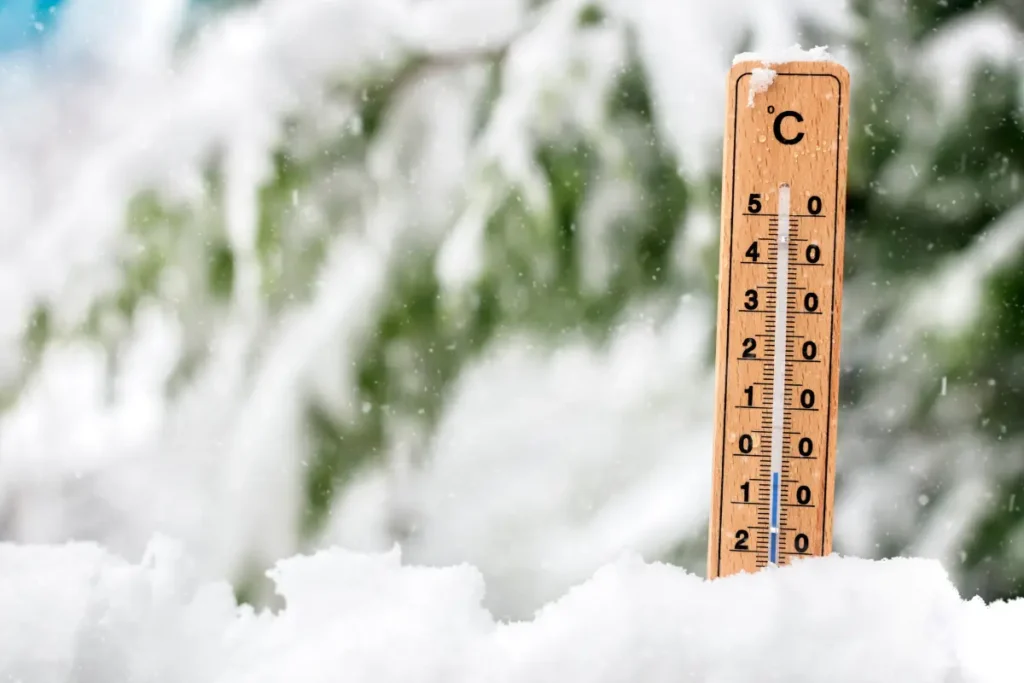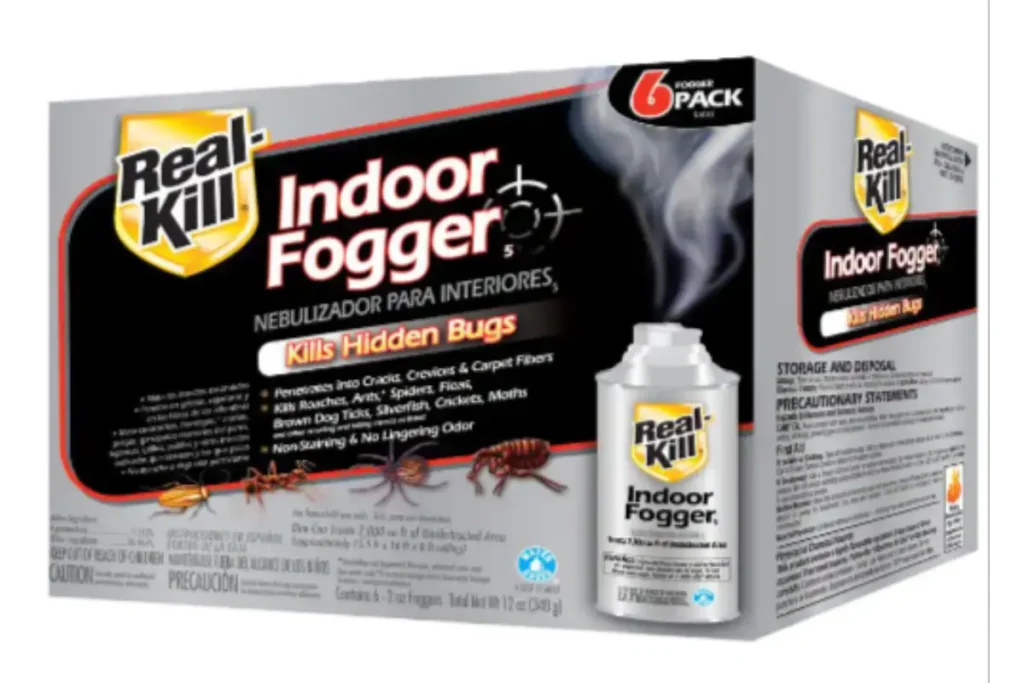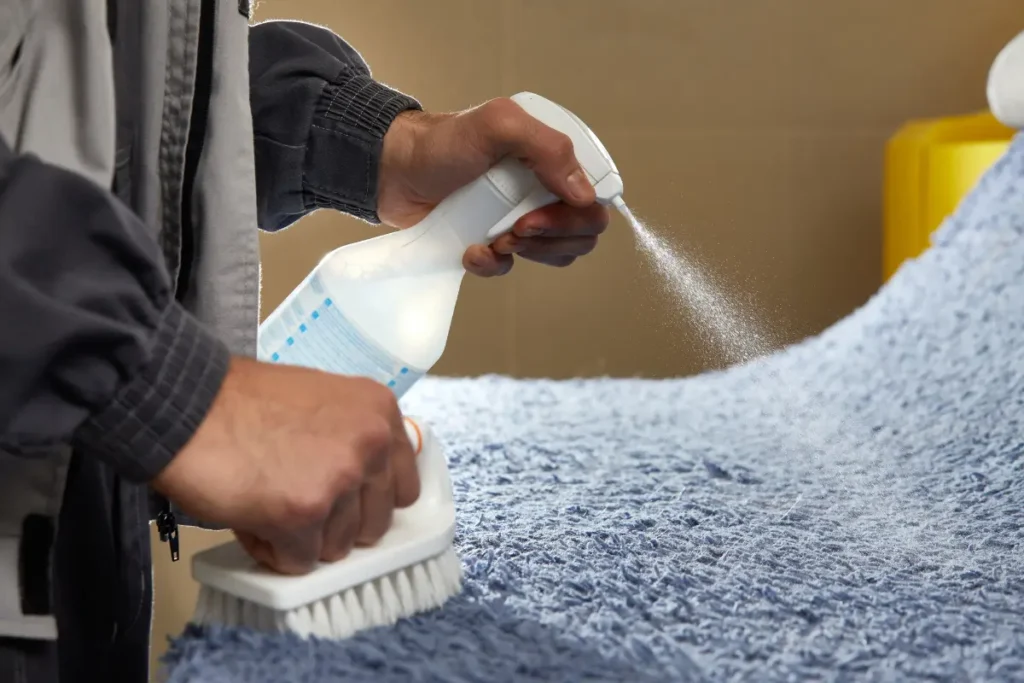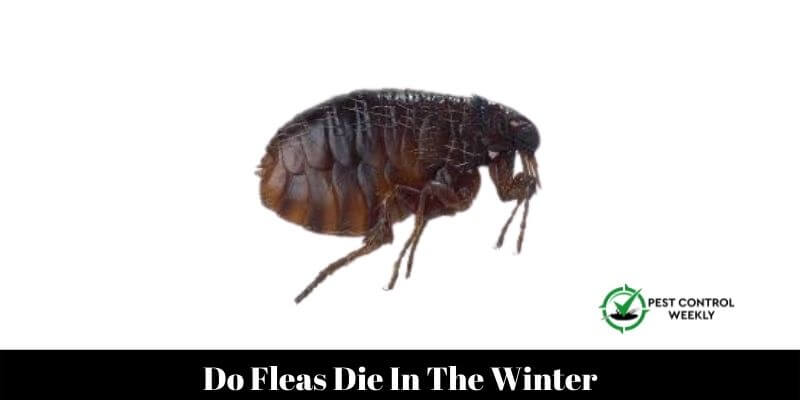Fleas die under numerous circumstances, but what is the impact of temperature on them, it´s quite interesting to know. You may often find fleas on a dog or cat most probably during winter. But, do fleas die in the winter?
Yes, Flas die in the winter if it gets below freezing and stays that way for a time. Fleas can survive in a room that is 46 degrees or colder. A mature flea, however, may not die for up to 5 days if the temperature is constantly below freezing.
However, although cold weather slows the life cycle of fleas, it does not kill the eggs. Read the article below to learn how fleas remain active during the winter.
Can Flea Eggs Survive Cold Weather?

Yes, flea eggs can survive in the winter. Although cold weather slows the life cycle of fleas, it does not kill the eggs. Flea eggs can hatch all winter long. However, no stage of the flea life cycle—egg, larval, pupa, or adult—can survive temperatures below freezing for very long.
A female flea can start laying eggs within 24 to 36 hours of biting a pet. In 30 days, she can lay up to 10,000 eggs. These eggs can wind up on your carpet or in other places in your house. Flea larvae create a cocoon, develop there as pupae, and occasionally spend up to 30 weeks there before emerging as adult fleas.
Although the cold may slow a flea’s life cycle, it can still hatch in the winter. The fleas may have already located a warmer location to lay their eggs, even if the temperatures reached freezing long enough to kill the adults.
Do Fleas Go Dormant In Winter?
No, during the winter, fleas do not become dormant. Fleas do not hibernate, and the winter does not make them less active. The exact opposite is true. Fleas frequently enter homes on pets’ bodies, with cats and dogs having the most propensity. Fleas are vicious parasites that feed on blood.
As soon as fleas enter houses, chaos ensues. They’ll keep reproducing and infesting our pets. Fleas like warm temperatures and stay close to a known food source. Thus the extreme winter cold makes sure they won’t be venturing outside.
Since fleas are opportunistic, they will likely enter homes via dogs. The best way to avoid a flea infestation in the winter is to install some protection all year.
At What Temperature Do Fleas Die Inside In Winter?

At temperatures below 46.4°F and above 95°F, adult fleas perish. Flea eggs and larvae, considered immature fleas, are slightly more sensitive to the cold and will perish at temperatures below 55.4°F.
Adult fleas will die even more quickly below freezing, passing away five days after exposure at 30.2°F. When temperatures rise by just about 7°F above freezing, the lifespan of an adult flea virtually doubles, with a 10-day survival period at 37.4°F.
Nearly 50% of newly emerged adult fleas will live for 20 days when temperatures above 46.4°F, which doubles a flea’s life span by another 10°F. Conversely, when temperatures exceed 95°F, fleas will often perish within two days, with some outliers based on relative humidity.
Do Fleas Come Back After Winter?
Yes, after the winter, fleas return. Flea infestations bring on scratching, itching, skin irritations, and infections in pets. People who ignore winter flea treatments risk flea infestation in their houses and yard when the warmer weather returns. Treatment for flea infestations can be expensive and complex.
However, many fleas and their eggs will perish as winter approaches. Fleas favor, and are most active at, a temperature range of about 75 degrees. Fleas can cocoon for months as the temperature drops and stays close to 50 degrees. At any stage of growth, a flea cannot endure subfreezing temperatures.
[4] Ways To Get Rid Of Fleas In The Winter
Various techniques include house spray, carpet spray, hot water cycling, vacuuming, and indoor foggers. Since fleas will utilize the home as a shelter throughout the winter, you must cure them.
Vacuuming

Vacuuming is a successful method of removing fleas in the winter. 100% of flea pupae and larvae, as well as 96% of adult fleas in carpets, were eliminated by vacuuming. If you have pets, vacuuming by itself won’t be sufficient to get rid of fleas from your home. Before tackling the task of getting rid of them from your home, it is imperative that you first get rid of the fleas on your dogs and keep them flea-free.
Hot Water Cycle

Fleas can be killed by hot water. Any temperature over 95°F causes them to die. This implies that putting flea-infested bedding in your washing machine’s hot wash cycle can help kill the insects.
To put things in perspective, a typical individual takes a shower in water that is about 105°F. Flea eggs that have infected your bedding, your pet’s bedding, or your sheets and clothes will also be killed by boiling water, such as in your washer (60°C), with the addition of detergent or bleach.
Indoor Foggers

Total-release foggers, commonly known as bug bombs, are pesticide devices that contain aerosol propellants and release their contents all at once to fumigate an area. People frequently use these products to get rid of fleas, cockroaches, and other pests around the house.
A flea bomb will only kill the adults and larvae fleas. It will do nothing to stop the pupae and eggs. This indicates that you are only addressing 40% of the current issue, and to make matters worse, there is no continuous flea prevention. When the flea bomb vapors go away, so does their lethal effect.
Carpet Spray

Treat the carpet with a spray remedy to get rid of any persistent fleas. These treatments penetrate the carpet to eliminate existing infestations and aid in avoiding new ones. Pet-owning homeowners need to apply a pet-friendly spray.
When combined with Flea Killer Plus Fogger, Flea Killer Plus Carpet is intended to combat severe flea infestations. The carpet and room spray Raid® Flea Killer Plus kills adult fleas immediately upon contact and develops eggs for up to four months on carpet and furniture.
Conclusion
In the winter, fleas die if the temperature drops below freezing and stays there for a time. Fleas can survive in a room that is 46 degrees. A mature flea can only be killed after up to five days of constantly below-freezing conditions.
However, freezing temperatures only reduce the life cycle of fleas, not kill their eggs. Fleas do not hibernate, and the winter does not make them less active. The exact opposite is true. Fleas frequently enter homes on pets’ bodies, with cats and dogs having the most propensity. Fleas are vicious parasites that feed on blood.
References
Chang Shu, Mengmeng Jiang, Meihua Yang, Jun Xu, Shanshan Zhao, Xiaoping Yin, Baoju Wang, Jinliang Sheng, Yuanzhi Wang, Flea surveillance on wild mammals in the northern region of Xinjiang, northwestern China, International Journal for Parasitology: Parasites and Wildlife, Volume 11, 2020.
Kreppel KS, Telfer S, Rajerison M, Morse A, Baylis M. Effect of temperature and relative humidity on the development times and survival of Synopsyllus fonquerniei and Xenopsylla cheopis, the flea vectors of plague in Madagascar. Parasit Vectors. 2016 Feb 11;9:82



